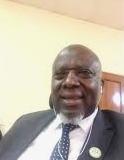An Autobiographical Reflection of an English as a Second Language Teacher
Teaching in Ghana
DOI:
https://doi.org/10.53449/ije.v7i1.357Keywords:
curriculum, Ghana, ESL, teaching English, teaching reading and writingAbstract
English is vital in Ghana because it functions as the country's official language and arguably as the nation's lingua franca. It is also the primary language used for instruction and assessment at all levels of education. In this paper, I reflect on my over ten years of experience teaching English in Ghana. I highlight the marginalization of teachers in discussions about curriculum issues. Further, I present my teaching philosophy regarding reading and writing. I also discussed and reflected on my teaching practices in relation to the selection of texts for my reading and writing class. While discussing my role as a teacher, I also emphasized the role of students in the reading and writing class. This paper highlights the need for teachers to adopt learner-centred teaching approaches.
Downloads
References
Adu-Gyamfi, S., Donkoh, W. J., & Addo, A. A. (2016). Educational reforms in Ghana: Past and present. Journal of Education and Human Development, 5(3), 158-172. https://doi.org/10.15640/jehd.v5n3a17
Alessi, S., & Dwyer, A. (2008). Vocabulary assistance before and during reading. Reading in a Foreign Language, 20, 246-263.http://hdl.handle.net/10125/66815
Apple, M. (1990). Is there a curriculum voice to reclaim? Phi Delta Kappan,71 (7), 526-530.
Azmuddin, R. A. A., Nor, N. F. M., & Hamat, A. (2020). Facilitating online reading comprehension in enhanced learning environment using digital annotation tools. IAFOR Journal of Education, 8(2), 7-27.
Barr, R.B.& Tagg, J. (1995). From teaching to learning: A new paradigm for undergraduate education. Change, 27(6), 12-25. https://doi.org/10.1080/00091383.1995.10544672
Bascia, N., Carr-Harris, S., Fine-Meyer, R., & Zurzolo, C. (2014). Teachers, curriculum innovation, and policy formation. Curriculum Inquiry, 44(2), 228-248. https://doi.org/10.1111/curi.12044
Biggs, J. (2012). What the student does: teaching for enhanced learning. Higher Education Research & Development, 31(1), 39-55. https://doi.org/10.1080/07294360.2012.642839
Bovill, C. (2020). Co-creation in learning and teaching: the case for a whole-class approach in higher education. Higher Education, 79(6), 1023-1037.
https://doi.org/10.1007/s10734-019-00453-w
Brantmeier, C. (2002). Second language reading strategy research at the secondary and university levels: Variations, disparities, and generalizability. The Reading Matrix, 2(3).
Brantmeier, C. (2003). Beyond linguistic knowledge: Individual differences in second language reading. Foreign Language Annals, 36(1), 33-43. https://doi.org/10.1111/j.1944-9720.2003.tb01930.x
Bronteng, J. E., Berson, I. R., & Berson, M. J. (2019). Public perception of early childhood language policy in Ghana: An exploratory study. Early Years, 39(3), 310-325. https://doi.org/10.1080/09575146.2019.1631759
Collins, J. W., & O'Brien, N. P. (Eds.) (2011). The Greenwood dictionary of education. Greenwood
Coxhead, A., & Byrd, P. (2007). Preparing writing teachers to teach the vocabulary and grammar of academic prose. Journal of Second Language Writing, 16(3), 129–147. https://doi.org/10.1016/j.jslw.2007.07.002
Cummins, J. (2012). The intersection of cognitive and sociocultural factors in the development of reading comprehension among the immigrant students. Reading and Writing, 25(8), 1973-1990. https://doi.org/10.1007/s11145-010-9290-7
Dei, J.G. S. (1996). Anti-Racism Education Theory and Practice. Fernwood Publishing.
Demirci, C., & Akcaalan, M. (2020). Active learning: English language teaching via write share learn strategy. International Journal of Educational Research Review, 5(3), 214-220. https://doi.org/10.24331/ijere.732948
Eisner, E.W. (1990). Who decides what schools teach? Phi Delta Kappan,71 (7), 523-526.
Freire, P. (2014). Pedagogy of the oppressed. Bloomsbury publishing: USA.
Grabe, W. (2009). Reading in a second language: Moving from theory to practice. Cambridge University Press.
Kieffer, M. J., & Lesaux, N. K. (2012). Direct and indirect roles of morphological awareness in the English reading comprehension of Native English, Spanish, Filipino, and Vietnamese Speakers. Language Learning, 62(4), 1170-1204. https://doi.org/10.1111/j.1467-9922.2012.00722.x
Knoch, U., Rouhshad, A., Oon, S. P., & Storch, N. (2015). What happens to ESL students' writing after three years of study at an English medium university? Journal of Second Language Writing, 28, 39-52. https://doi.org/10.1016/j.jslw.2015.02.005
Koda, K. (2005). Insights into second language reading: A cross-linguistic approach. Cambridge University Press.
Lado, R. (1957). Linguistics across cultures: Applied linguistics for language teachers. Ann Arbor.
LeTexier, K. (2008). Storytelling as an active learning strategy in introduction to psychology courses [Doctoral dissertation] Walden University.
Low, M. (2003). Radical contingencies in the words of a student: (Dis)placing, (re)marking, languaging. In E. Hasebe- Ludt and W. Hurren (Eds.) Curriculum intertext: Place/ Language/ Pedagogy (pp.57-69). Peter Lang.
McLaughlin, V. L., West, J. E., & Anderson, J. A. (2016). Engaging effectively in the policy-making process. Teacher Education and Special Education, 39(2), 134-149. https://doi.org/10.1177/0888406416637902
Nassaji, H. (2014). The role and importance of lower-level processes in second language reading. Language Teaching, 47(1), 1-37. https://doi.org/10.1017/S0261444813000396
Opoku-Amankwa, K. (2009). English-only language-in-education policy in multilingual classrooms in Ghana. Language, Culture and Curriculum, 22(2), 121-135. https://doi.org/10.1080/07908310903075159
Owusu-Kwarteng, E., Opoku, P., Dagba, G., & Amankwa, M. (2018). The impact of political transition on Ghana's educational system. A case study of the 4th republic. A case study of the 4th Republic. https://dx.doi.org/10.2139/ssrn.3438937
Prince M. (2004). Does active learning work? A review of the research. Journal of Engineering Education, 93(3), 223-231. https://doi.org/10.1002/j.2168-9830.2004.tb00809.x
Rollinson, P. (2005). Using peer feedback in the ESL writing class. ELT journal, 59(1), 23-30. https://doi.org/10.1093/elt/cci003
Schmitt, N., Jiang, X., & Grabe, W. (2011). The percentage of words known in a text and reading comprehension. The Modern Language Journal, 95(1), 26-43. https://doi.org/10.1111/j.1540-4781.2011.01146.x
Shuell, T. J. (1986). Cognitive Conceptions of Learning. Review of Educational Research, 56(4), 411-436. https://doi.org/10.3102/00346543056004411
Smith, C. V., & Cardaciotto, L. (2011). Is active learning like broccoli? Student perceptions of active learning in large lecture classes. Journal of the Scholarship of Teaching and Learning, 11(1), 53-61.
Smith, J. & Elley, W., (1997). How children learn to read. Longman.
Suk, N. (2017). The effects of extensive reading on reading comprehension, reading rate, and vocabulary acquisition. Reading Research Quarterly, 52(1), 73-89. https://doi.org/10.1002/rrq.152
Swales, J. M. (1990). Genre analysis: English in academic and research settings. Cambridge University Press.
Vandrick, S. (2003). Literature in the teaching of second language composition. In B. Kroll, M. H. Long, J. C. Richards (Eds.), Exploring the dynamics of second language writing (pp. 263- 285). Cambridge University Press.
Watkins, N. A. (2022). The role of teachers in educational policymaking. Literature Reviews in Education and Human Services, 1(1), 1-23.
Yamashita, J. (2002). Mutual compensation between L1 reading ability and L2 language proficiency in L2 reading comprehension. Journal of Research in Reading, 25(1), 81-95. https://doi.org/10.1111/1467-9817.00160
Downloads
Published
Issue
Section
License
Copyright (c) 2024 Hilarius Kofi Kofinti

This work is licensed under a Creative Commons Attribution-NoDerivatives 4.0 International License.








